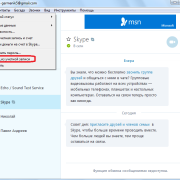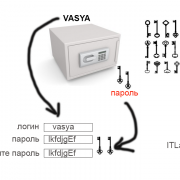Класс type() в python, возвращает тип объекта
Содержание:
- 9.8. Iterators¶
- The __init__() Method
- Вступление
- Конструктор классов с наследованием
- 8.7. Class definitions¶
- Увеличение объема памяти: полный успех
- Constructors in Python
- post-init parameters
- Проверка подключения микрофона на компьютере
- GPON от МГТС версия 2016 — 2018 года: 16 комментариев
- Дескрипторы функций и методы класса.
- Переменные класса или переменные экземпляра?
- @classmethod и @staticmethod
- С множественным наследованием
- Определение конструктора для класса
- Creating an Object in Python
- 9.10. Generator Expressions¶
- 4.4. break and continue Statements, and else Clauses on Loops¶
- Наследование и полиморфизм
- Источники
- 8.3. The for statement¶
- 4.3. The range() Function¶
- Python Tutorial
- 8.8. Coroutines¶
- 9.1. Несколько слов об именах и объектах
- Настройка отдельных полей
9.8. Iterators¶
By now you have probably noticed that most container objects can be looped over
using a statement:
for element in 1, 2, 3]:
print(element)
for element in (1, 2, 3):
print(element)
for key in {'one'1, 'two'2}:
print(key)
for char in "123"
print(char)
for line in open("myfile.txt"):
print(line, end='')
This style of access is clear, concise, and convenient. The use of iterators
pervades and unifies Python. Behind the scenes, the statement
calls on the container object. The function returns an iterator
object that defines the method which accesses
elements in the container one at a time. When there are no more elements,
raises a exception which tells the
loop to terminate. You can call the method
using the built-in function; this example shows how it all works:
>>> s = 'abc'
>>> it = iter(s)
>>> it
<iterator object at 0x00A1DB50>
>>> next(it)
'a'
>>> next(it)
'b'
>>> next(it)
'c'
>>> next(it)
Traceback (most recent call last):
File "<stdin>", line 1, in <module>
next(it)
StopIteration
Having seen the mechanics behind the iterator protocol, it is easy to add
iterator behavior to your classes. Define an method which
returns an object with a method. If the class
defines , then can just return :
class Reverse
"""Iterator for looping over a sequence backwards."""
def __init__(self, data):
self.data = data
self.index = len(data)
def __iter__(self):
return self
def __next__(self):
if self.index ==
raise StopIteration
self.index = self.index - 1
return self.dataself.index
The __init__() Method
Python has a special method called that you can add to your class. The method is invoked whenever an object is created from the class. Therefore you can make use of the method without having to explictly call it.
Here’s a simple example to demonstrate:
# Create the class
class MyClass:
def __init__(self):
self.a = «Hey»
def b(self):
return «Hello World»
# Create an object from the class
o = MyClass()
# Now we can work with the object
print(o.a)
print(o.b())Result
Hey Hello World
We can access the variable using (i.e. ). So if we had an object called and another called then we could use and respectively.
Вступление
Dataclasses — это новые классы в Python, которые предназначены создания объектов данных (или как их еще называют классов данных). Вы спрашиваете, что такое объекты данных? Вот неполный список функций, которые определяют объекты данных:
- Они предназначены для хранения данных и тем самым они представлять собой особый тип классов. Например: это может быть просто число или, даже это может быть экземпляр модели ORM. Создавая таким образом особый вид сущности. Так же они могут содержит атрибуты, которые определяют или представляют эту сущность.
- Их так же можно сравнить с другими объектами того же типа. Например: число может быть больше, меньше или равно другому числу
У Dataclasses есть, конечно, больше возможностей, но этого списка достаточно для начало, чтобы помочь вам понять суть.
Чтобы разобраться с Dataclasses, мы реализуем простой класс, который будет содержат простое число и позволит нам выполнить вышеупомянутые операции. Сначала мы используем обычные классы для этого, а затем сделаем все тоже самое с помощью Dataclasses.
Но прежде чем мы начнем, пару слов о том как создать Dataclasses
В Python 3.7 предоставлен новый декоратор , который используется для преобразования обычного класса в класс данных (dataclass).
Все, что вам нужно сделать, это обернуть класс в декоратор:
from dataclasses import dataclass @dataclass class A: …
Теперь давайте углубимся в использование Dataclasses.
Конструктор классов с наследованием
class Person:
def __init__(self, n):
print('Person Constructor')
self.name = n
class Employee(Person):
def __init__(self, i, n):
print('Employee Constructor')
super().__init__(n) # same as Person.__init__(self, n)
self.id = i
emp = Employee(99, 'Pankaj')
print(f'Employee ID is {emp.id} and Name is {emp.name}')
Выход:
Employee Constructor Person Constructor Employee ID is 99 and Name is Pankaj
- Мы обязаны вызвать конструктор суперкласса.
- Мы можем использовать функцию super() для вызова функции конструктора суперкласса.
- Мы также можем использовать имя суперкласса для вызова его метода init().
8.7. Class definitions¶
A class definition defines a class object (see section ):
classdef ::= [] "class" [] ":"
inheritance ::= "(" [] ")"
classname ::=
A class definition is an executable statement. The inheritance list usually
gives a list of base classes (see for more advanced uses), so
each item in the list should evaluate to a class object which allows
subclassing. Classes without an inheritance list inherit, by default, from the
base class ; hence,
class Foo
pass
is equivalent to
class Foo(object):
pass
The class’s suite is then executed in a new execution frame (see ),
using a newly created local namespace and the original global namespace.
(Usually, the suite contains mostly function definitions.) When the class’s
suite finishes execution, its execution frame is discarded but its local
namespace is saved. A class object is then created using the inheritance
list for the base classes and the saved local namespace for the attribute
dictionary. The class name is bound to this class object in the original local
namespace.
The order in which attributes are defined in the class body is preserved
in the new class’s . Note that this is reliable only right
after the class is created and only for classes that were defined using
the definition syntax.
Class creation can be customized heavily using .
Classes can also be decorated: just like when decorating functions,
@f1(arg) @f2 class Foo pass
is roughly equivalent to
class Foo pass Foo = f1(arg)(f2(Foo))
The evaluation rules for the decorator expressions are the same as for function
decorators. The result is then bound to the class name.
Changed in version 3.9: Classes may be decorated with any valid .
Previously, the grammar was much more restrictive; see PEP 614 for
details.
Programmer’s note: Variables defined in the class definition are class
attributes; they are shared by instances. Instance attributes can be set in a
method with . Both class and instance attributes are
accessible through the notation “”, and an instance attribute hides
a class attribute with the same name when accessed in this way. Class
attributes can be used as defaults for instance attributes, but using mutable
values there can lead to unexpected results.
can be used to create instance variables with different implementation details.
Увеличение объема памяти: полный успех
Constructors in Python
Class functions that begin with double underscore are called special functions as they have special meaning.
Of one particular interest is the function. This special function gets called whenever a new object of that class is instantiated.
This type of function is also called constructors in Object Oriented Programming (OOP). We normally use it to initialize all the variables.
Output
2+3j
(5, 0, 10)
Traceback (most recent call last):
File "<string>", line 27, in <module>
print(num1.attr)
AttributeError: 'ComplexNumber' object has no attribute 'attr'
In the above example, we defined a new class to represent complex numbers. It has two functions, to initialize the variables (defaults to zero) and to display the number properly.
An interesting thing to note in the above step is that attributes of an object can be created on the fly. We created a new attribute attr for object num2 and read it as well. But this does not create that attribute for object num1.
post-init parameters
In an earlier version of this PEP before InitVar was added, the
post-init function __post_init__ never took any parameters.
The normal way of doing parameterized initialization (and not just
with Data Classes) is to provide an alternate classmethod constructor.
For example:
@dataclass
class C:
x: int
@classmethod
def from_file(cls, filename):
with open(filename) as fl:
file_value = int(fl.read())
return C(file_value)
c = C.from_file('file.txt')
Because the __post_init__ function is the last thing called in the
generated __init__, having a classmethod constructor (which can
also execute code immediately after constructing the object) is
functionally equivalent to being able to pass parameters to a
__post_init__ function.
With InitVars, __post_init__ functions can now take
parameters. They are passed first to __init__ which passes them
to __post_init__ where user code can use them as needed.
The only real difference between alternate classmethod constructors
and InitVar pseudo-fields is in regards to required non-field
parameters during object creation. With InitVars, using
__init__ and the module-level replace() function InitVars
must always be specified. Consider the case where a context
object is needed to create an instance, but isn’t stored as a field.
With alternate classmethod constructors the context parameter is
always optional, because you could still create the object by going
through __init__ (unless you suppress its creation). Which
approach is more appropriate will be application-specific, but both
approaches are supported.
Проверка подключения микрофона на компьютере
После того, как вы подсоединили ваш микрофон к системному блоку или к ноутбуку, вам необходимо проверить его в работе. Это можно сделать следующими способами:
- Основная проверка начинается в настройках компьютера:
- Зайдите в меню вашего компьютера и откройте поле «Панель управления»,
- Найдите вкладку «Звук», а далее «Запись»,
- Нажмите на слово «Микрофон» и выберите функцию «Прослушать»,
- Не забудьте пометить галочкой функцию «Прослушать с данного устройства», которая будет находиться в той же вкладке.
- Если компьютер работает исправно и микрофон подключен правильно, то вы можете зайти в функцию звукозаписи и попробовать записать голосовое сообщение, затем его воспроизвести, после чего будет понятно, подключился ли микрофон.
- Другой способ проверки можно выполнить, открыв любую программу с использованием аудио. Например, попробуйте зайти в Skype и позвонить кому-либо из друзей. Можно сделать вызов администратора в Skype, чтобы проверить звук. Вам будет предложено записать короткое звуковое сообщение после сигнала, затем ваша запись будет воспроизведена. Если вы услышите ваш голос, то оборудование подключено и работает.

GPON от МГТС версия 2016 — 2018 года: 16 комментариев
Дескрипторы функций и методы класса.
Объектно-ориентированные функции Python построены на среде, основанной на функциях. Используя дескрипторы, не относящиеся к данным, они легко объединяются.
Словари классов хранят методы как функции. В определении класса, методы, написанные с использованием или , обычные инструменты для создания функции. Методы отличаются от обычных функций только тем, что первый аргумент зарезервирован для экземпляра объекта. По соглашению Python ссылка на экземпляр называется , но может называться этим или любым другим именем переменной.
Для поддержки вызовов методов, функции включают метод для привязки методов во время доступа к атрибутам. Это означает, что все функции, которые возвращают связанные методы, когда они вызываются из объекта — не являются .
В чистом Python это работает так:
class Function
. . .
def __get__(self, obj, objtype=None):
"Simulate func_descr_get() in Objects/funcobject.c"
if obj is None
return self
return types.MethodType(self, obj)
Запуск интерпретатора показывает, как дескриптор функции работает на практике:
>>> class D ... def f(self, x): ... return x ... >>> d = D() # Доступ через словарь классов не вызывает __get__. # Он просто возвращает базовый объект функции. >>> D.__dict__'f' # <function D.f at 0x00C45070> # Доступ из класса вызывает функцию __get__(), # которая просто возвращает базовую функцию без изменений. >>> D.f # <function D.f at 0x00C45070> # Функция имеет атрибут `__qualname__` для поддержки интроспекции >>> D.f.__qualname__ # 'D.f' # Доступ из экземпляра вызывает функцию __get__(), которая # возвращает функцию, обернутую в связанный объект метода >>> d.f # <bound method D.f of <__main__.D object at 0x00B18C90>> # Внутренне связанный метод хранит базовую функцию # и связанный экземпляр. >>> d.f.__func__ # <function D.f at 0x1012e5ae8> >>> d.f.__self__ # <__main__.D object at 0x1012e1f98>
Переменные класса или переменные экземпляра?
Когда переменная определяется на уровне класса, она называется переменной класса. Когда переменная определяется в конструкторе, она называется переменной экземпляра.
Переменные класса являются общими для всех экземпляров класса, тогда как переменные экземпляра уникальны для экземпляра
Итак, очень важно понимать, когда использовать переменную класса, а когда — переменную экземпляра
В предыдущих примерах атрибут employee_id уникален для экземпляра Employee, поэтому лучше иметь его в качестве переменной экземпляра и определять в конструкторе.
Предположим, мы хотим отслеживать количество созданных экземпляров сотрудников и выделенных идентификаторов сотрудников. В этом случае мы можем использовать переменные класса для хранения этих данных и обновления экземплярами.
class Employee:
count = 0
ids_list = []
def __init__(self, i):
self.id = i
Employee.count += 1
self.ids_list.append(i)
for x in range(0, 10):
emp = Employee(x)
print(f'Number of employees created = {Employee.count}')
print(f'List of employee ids allocated = {Employee.ids_list}')
emp = Employee(1000)
print(f'List of employee ids allocated = {emp.ids_list}')
Выход:

Number of employees created = 10 List of employee ids allocated = List of employee ids allocated =
Примечание: мы можем получить доступ к переменным класса через имя класса, а также через переменную экземпляра.
@classmethod и @staticmethod
Я не пользовался ими ранее, так что сделал небольшое исследование.
- Декоратор <*@classmethod>* может быть вызван при помощи экземпляра класса, или напрямую, через собственный класс Python в качестве первого аргумента. В соответствии с документацией Python: он может быть вызван как в классе (например, C.f()), или в экземпляре (например, C().f()). Экземпляр игнорируется, за исключением его класса. Если метод класса вызван для выведенного класса, то объект выведенного класса передается в качестве подразумеваемого первого аргумента.
- Декоратор @classmethod, в первую очередь, используется как чередуемый конструктор или вспомогательный метод для инициализации.
- Декоратор <*@staticmethod>* — это просто функция внутри класса. Вы можете вызывать их обоих как с инициализацией класса так и без создания экземпляра класса. Обычно это применяется в тех случаях, когда у вас есть функция, которая, по вашему убеждению, имеет связь с классом. По большей части, это выбор стиля.
Если мы взглянем на пример кода, в котором показано, как работает декоратор, это может помочь понять основные принципы:
Python
# -*- coding: utf-8 -*-
class DecoratorTest(object):
«»»
Тестируем обычный метод против @classmethod против @staticmethod
«»»
def __init__(self):
«»»Конструктор»»»
pass
def doubler(self, x):
print(«умножаем на 2»)
return x*2
@classmethod
def class_tripler(klass, x):
print(«умножаем на 3: %s» % klass)
return x*3
@staticmethod
def static_quad(x):
print(«умножаем на 4»)
return x*4
if __name__ == «__main__»:
decor = DecoratorTest()
print(decor.doubler(5))
print(decor.class_tripler(3))
print(DecoratorTest.class_tripler(3))
print(DecoratorTest.static_quad(2))
print(decor.static_quad(3))
print(decor.doubler)
print(decor.class_tripler)
print(decor.static_quad)
|
1 |
# -*- coding: utf-8 -*- classDecoratorTest(object) «»» Тестируем обычный метод против @classmethod против @staticmethod def__init__(self) «»»Конструктор»»» pass defdoubler(self,x) print(«умножаем на 2») returnx*2 @classmethod defclass_tripler(klass,x) print(«умножаем на 3: %s»%klass) returnx*3 @staticmethod defstatic_quad(x) print(«умножаем на 4») returnx*4 if__name__==»__main__» decor=DecoratorTest() print(decor.doubler(5)) print(decor.class_tripler(3)) print(DecoratorTest.class_tripler(3)) print(DecoratorTest.static_quad(2)) print(decor.static_quad(3)) print(decor.doubler) print(decor.class_tripler) print(decor.static_quad) |
Этот пример демонстрирует, что вы можете вызывать обычный метод и оба метода декоратора одним и тем же путем
Обратите внимание на то, что вы можете вызывать обе функции @classmethod и @staticmethod прямо из класса или из экземпляра класса. Если вы попытаетесь вызвать обычную функцию при помощи класса (другими словами, DecoratorTest.doubler(2)), вы получите ошибку TypeError
Также стоит обратить внимание на то, что последний оператор вывода показывает, что decor.static_quad возвращает обычную функцию вместо связанного метода.
С множественным наследованием
Мы не можем использовать super() для доступа ко всем суперклассам в случае множественного наследования. Лучшим подходом было бы вызвать функцию конструктора суперклассов, используя их имя класса.
class A1:
def __init__(self, a1):
print('A1 Constructor')
self.var_a1 = a1
class B1:
def __init__(self, b1):
print('B1 Constructor')
self.var_b1 = b1
class C1(A1, B1):
def __init__(self, a1, b1, c1):
print('C1 Constructor')
A1.__init__(self, a1)
B1.__init__(self, b1)
self.var_c1 = c1
c_obj = C1(1, 2, 3)
print(f'c_obj var_a={c_obj.var_a1}, var_b={c_obj.var_b1}, var_c={c_obj.var_c1}')
Вывод:
C1 Constructor A1 Constructor B1 Constructor c_obj var_a=1, var_b=2, var_c=3
Python не поддерживает несколько конструкторов
Python не поддерживает несколько конструкторов, в отличие от других популярных объектно-ориентированных языков программирования, таких как Java.
Мы можем определить несколько методов __init __(), но последний из них переопределит предыдущие определения.
class D:
def __init__(self, x):
print(f'Constructor 1 with argument {x}')
# this will overwrite the above constructor definition
def __init__(self, x, y):
print(f'Constructor 1 with arguments {x}, {y}')
d1 = D(10, 20) # Constructor 1 with arguments 10, 20
Может ли функция Python __init __() что-то вернуть?
Если мы попытаемся вернуть значение, отличное от None, из функции __init __(), это вызовет ошибку TypeError.
class Data:
def __init__(self, i):
self.id = i
return True
d = Data(10)
Вывод:
TypeError: __init__() should return None, not 'bool'
Если мы изменим оператор return на тогда код будет работать без каких-либо исключений.
Определение конструктора для класса
Если вы заметили реализацию класса Employee, невозможно установить значение employee_id. Мы можем определить отдельный метод для установки значения employee_id. Но это обязательное свойство объекта Employee. Лучшее место для установки этих свойств — через конструктор.
Давайте продолжим и создадим конструктор для класса Employee. Мы ожидаем, что вызывающая программа передаст значение employee_id в качестве аргумента.
class Employee:
def __init__(self, i):
self.employee_id = i
def work(self):
print(f'{self.employee_id} is working')
emp = Employee(100)
emp.work()
Выход:
Примечание: предыдущий код для создания объекта Employee теперь не будет работать, потому что конструктор Employee ожидает аргумент. Если мы вызовем , он вызовет ошибку TypeError: в init() отсутствует 1 обязательный позиционный аргумент: ‘id’.
Можем ли мы иметь несколько конструкторов?
В отличие от других популярных объектно-ориентированных языков программирования, Python не поддерживает перегрузку методов и конструкторов.
Однако, если мы определим несколько конструкторов в классе, это не вызовет никаких ошибок. Последний конструктор перезапишет ранее определенное определение конструктора. Давайте посмотрим на это на примере.
class Employee:
def __init__(self, id):
self.employee_id = id
# this will overwrite earlier defined constructor
def __init__(self, id, n):
self.employee_id = id
self.emp_name = n
def work(self):
print(f'{self.emp_name} is working')
emp = Employee(100, 'Pankaj')
emp.work()
emp = Employee(100) # will raise Error
emp.work()
Вывод:
Pankaj is working
Traceback (most recent call last):
File "/Users/pankaj/Documents/PycharmProjects/AskPython/hello-world/class_examples.py", line 19, in <module>
emp = Employee(100)
TypeError: __init__() missing 1 required positional argument: 'n'
Creating an Object in Python
We saw that the class object could be used to access different attributes.
It can also be used to create new object instances (instantiation) of that class. The procedure to create an object is similar to a function call.
This will create a new object instance named harry. We can access the attributes of objects using the object name prefix.
Attributes may be data or method. Methods of an object are corresponding functions of that class.
This means to say, since is a function object (attribute of class), will be a method object.
Output
<function Person.greet at 0x7fd288e4e160> <bound method Person.greet of <__main__.Person object at 0x7fd288e9fa30>> Hello
You may have noticed the parameter in function definition inside the class but we called the method simply as without any arguments. It still worked.
This is because, whenever an object calls its method, the object itself is passed as the first argument. So, translates into .
In general, calling a method with a list of n arguments is equivalent to calling the corresponding function with an argument list that is created by inserting the method’s object before the first argument.
For these reasons, the first argument of the function in class must be the object itself. This is conventionally called self. It can be named otherwise but we highly recommend to follow the convention.
Now you must be familiar with class object, instance object, function object, method object and their differences.
9.10. Generator Expressions¶
Some simple generators can be coded succinctly as expressions using a syntax
similar to list comprehensions but with parentheses instead of square brackets.
These expressions are designed for situations where the generator is used right
away by an enclosing function. Generator expressions are more compact but less
versatile than full generator definitions and tend to be more memory friendly
than equivalent list comprehensions.
Examples:
>>> sum(i*i for i in range(10)) # sum of squares 285 >>> xvec = 10, 20, 30 >>> yvec = 7, 5, 3 >>> sum(x*y for x,y in zip(xvec, yvec)) # dot product 260 >>> unique_words = set(word for line in page for word in line.split()) >>> valedictorian = max((student.gpa, student.name) for student in graduates) >>> data = 'golf' >>> list(datai for i in range(len(data)-1, -1, -1))
Footnotes
-
Except for one thing. Module objects have a secret read-only attribute called
which returns the dictionary used to implement the module’s
namespace; the name is an attribute but not a global name.
Obviously, using this violates the abstraction of namespace implementation, and
should be restricted to things like post-mortem debuggers.
4.4. break and continue Statements, and else Clauses on Loops¶
The statement, like in C, breaks out of the innermost enclosing
or loop.
Loop statements may have an clause; it is executed when the loop
terminates through exhaustion of the iterable (with ) or when the
condition becomes false (with ), but not when the loop is
terminated by a statement. This is exemplified by the
following loop, which searches for prime numbers:
>>> for n in range(2, 10): ... for x in range(2, n): ... if n % x == ... print(n, 'equals', x, '*', n//x) ... break ... else ... # loop fell through without finding a factor ... print(n, 'is a prime number') ... 2 is a prime number 3 is a prime number 4 equals 2 * 2 5 is a prime number 6 equals 2 * 3 7 is a prime number 8 equals 2 * 4 9 equals 3 * 3
(Yes, this is the correct code. Look closely: the clause belongs to
the loop, not the statement.)
When used with a loop, the clause has more in common with the
clause of a statement than it does with that of
statements: a statement’s clause runs
when no exception occurs, and a loop’s clause runs when no
occurs. For more on the statement and exceptions, see
.
The statement, also borrowed from C, continues with the next
iteration of the loop:
Наследование и полиморфизм
Наследование и полиморфизм – две фундаментальные концепции в ООП. Благодаря первому, объекты получают (другими словами, наследуют) атрибуты и функциональные возможности других объектов, создавая иерархию от более общих объектов к более конкретным. Например, и класс Car (машина), и класс Boat (лодка) являются конкретными типами класса Vehicle (транспортное средство). Оба объекта наследуют поведение одного родительского объекта или множества родительских объектов. В этом случае их называют дочерними объектами.
Полиморфизм, в свою очередь, — это возможность работы с разными объектами с помощью одной и той же функции или метода.
Обе эти фундаментальные ООП-концепции реализованы в Java и Python совершенно по-разному.
Источники
8.3. The for statement¶
The statement is used to iterate over the elements of a sequence
(such as a string, tuple or list) or other iterable object:
for_stmt ::= "for" "in" ":"
The expression list is evaluated once; it should yield an iterable object. An
iterator is created for the result of the . The suite is
then executed once for each item provided by the iterator, in the order returned
by the iterator. Each item in turn is assigned to the target list using the
standard rules for assignments (see ), and then the suite is
executed. When the items are exhausted (which is immediately when the sequence
is empty or an iterator raises a exception), the suite in
the clause, if present, is executed, and the loop terminates.
A statement executed in the first suite terminates the loop
without executing the clause’s suite. A
statement executed in the first suite skips the rest of the suite and continues
with the next item, or with the clause if there is no next
item.
The for-loop makes assignments to the variables in the target list.
This overwrites all previous assignments to those variables including
those made in the suite of the for-loop:
for i in range(10):
print(i)
i = 5 # this will not affect the for-loop
# because i will be overwritten with the next
# index in the range
Names in the target list are not deleted when the loop is finished, but if the
sequence is empty, they will not have been assigned to at all by the loop. Hint:
the built-in function returns an iterator of integers suitable to
emulate the effect of Pascal’s ; e.g.,
returns the list .
4.3. The range() Function¶
If you do need to iterate over a sequence of numbers, the built-in function
comes in handy. It generates arithmetic progressions:
>>> for i in range(5): ... print(i) ... 1 2 3 4
The given end point is never part of the generated sequence; generates
10 values, the legal indices for items of a sequence of length 10. It
is possible to let the range start at another number, or to specify a different
increment (even negative; sometimes this is called the ‘step’):
range(5, 10) 5, 6, 7, 8, 9 range(, 10, 3) , 3, 6, 9 range(-10, -100, -30) -10, -40, -70
To iterate over the indices of a sequence, you can combine and
as follows:
>>> a = 'Mary', 'had', 'a', 'little', 'lamb' >>> for i in range(len(a)): ... print(i, ai]) ... 0 Mary 1 had 2 a 3 little 4 lamb
In most such cases, however, it is convenient to use the
function, see .
A strange thing happens if you just print a range:
>>> print(range(10)) range(0, 10)
In many ways the object returned by behaves as if it is a list,
but in fact it isn’t. It is an object which returns the successive items of
the desired sequence when you iterate over it, but it doesn’t really make
the list, thus saving space.
We say such an object is , that is, suitable as a target for
functions and constructs that expect something from which they can
obtain successive items until the supply is exhausted. We have seen that
the statement is such a construct, while an example of a function
that takes an iterable is :
>>> sum(range(4)) # 0 + 1 + 2 + 3 6
Later we will see more functions that return iterables and take iterables as
arguments. Lastly, maybe you are curious about how to get a list from a range.
Here is the solution:
>>> list(range(4))
Python Tutorial
Python HOMEPython IntroPython Get StartedPython SyntaxPython CommentsPython Variables
Python Variables
Variable Names
Assign Multiple Values
Output Variables
Global Variables
Variable Exercises
Python Data TypesPython NumbersPython CastingPython Strings
Python Strings
Slicing Strings
Modify Strings
Concatenate Strings
Format Strings
Escape Characters
String Methods
String Exercises
Python BooleansPython OperatorsPython Lists
Python Lists
Access List Items
Change List Items
Add List Items
Remove List Items
Loop Lists
List Comprehension
Sort Lists
Copy Lists
Join Lists
List Methods
List Exercises
Python Tuples
Python Tuples
Access Tuples
Update Tuples
Unpack Tuples
Loop Tuples
Join Tuples
Tuple Methods
Tuple Exercises
Python Sets
Python Sets
Access Set Items
Add Set Items
Remove Set Items
Loop Sets
Join Sets
Set Methods
Set Exercises
Python Dictionaries
Python Dictionaries
Access Items
Change Items
Add Items
Remove Items
Loop Dictionaries
Copy Dictionaries
Nested Dictionaries
Dictionary Methods
Dictionary Exercise
Python If…ElsePython While LoopsPython For LoopsPython FunctionsPython LambdaPython ArraysPython Classes/ObjectsPython InheritancePython IteratorsPython ScopePython ModulesPython DatesPython MathPython JSONPython RegExPython PIPPython Try…ExceptPython User InputPython String Formatting
8.8. Coroutines¶
New in version 3.5.
8.8.1. Coroutine function definition
async_funcdef ::= [] "async" "def" "(" [] ")"
":"
Execution of Python coroutines can be suspended and resumed at many points
(see ). Inside the body of a coroutine function, and
identifiers become reserved keywords; expressions,
and can only be used in
coroutine function bodies.
Functions defined with syntax are always coroutine functions,
even if they do not contain or keywords.
It is a to use a expression inside the body
of a coroutine function.
An example of a coroutine function:
async def func(param1, param2):
do_stuff()
await some_coroutine()
8.8.2. The statement
async_for_stmt ::= "async"
An is able to call asynchronous code in its
iter implementation, and can call asynchronous
code in its next method.
The statement allows convenient iteration over asynchronous
iterators.
The following code:
async for TARGET in ITER
SUITE
else
SUITE2
Is semantically equivalent to:
iter = (ITER)
iter = type(iter).__aiter__(iter)
running = True
while running
try
TARGET = await type(iter).__anext__(iter)
except StopAsyncIteration
running = False
else
SUITE
else
SUITE2
See also and for details.
It is a to use an statement outside the
body of a coroutine function.
8.8.3. The statement
async_with_stmt ::= "async"
An is a that is
able to suspend execution in its enter and exit methods.
The following code:
async with EXPRESSION as TARGET
SUITE
is semantically equivalent to:
manager = (EXPRESSION)
aenter = type(manager).__aenter__
aexit = type(manager).__aexit__
value = await aenter(manager)
hit_except = False
try
TARGET = value
SUITE
except
hit_except = True
if not await aexit(manager, *sys.exc_info()):
raise
finally
if not hit_except
await aexit(manager, None, None, None)
See also and for details.
It is a to use an statement outside the
body of a coroutine function.
See also
- PEP 492 — Coroutines with async and await syntax
-
The proposal that made coroutines a proper standalone concept in Python,
and added supporting syntax.
Footnotes
-
The exception is propagated to the invocation stack unless
there is a clause which happens to raise another
exception. That new exception causes the old one to be lost. -
A string literal appearing as the first statement in the function body is
transformed into the function’s attribute and therefore the
function’s . -
A string literal appearing as the first statement in the class body is
transformed into the namespace’s item and therefore the class’s
.
9.1. Несколько слов об именах и объектах
У объектов есть индивидуальность, и несколько имен (в несколько областях видимости) могут быть связаны с одним и тем же объектом. Это известно как использование псевдонимов (aliasing) в других языках
Обычно это не принимается во внимание при первом знакомстве с Python, и это можно спокойно игнорировать при работе с неизменными основными типами (числами, строками, кортежами). С другой стороны, использование псевдонимов предоставляет возможность неожиданного эффекта от семантики кода Python с участием изменяемых объектов, таких как списки, словари и множества других типов
Это обычно несет пользу для программы, так как псевдонимы в некоторых отношениях ведут себя как указатели. Например, передать объект легче, так как реализацией передается только указатель; и если функция изменяет объект, переданный в качестве аргумента, в вызывающей части кода будут наблюдаться изменения — это устраняет необходимость для двух различных механизмов передачи параметров как в Pascal.
Настройка отдельных полей
В большинстве стандартных ситуаций это не потребуется, однако есть возможность настроить поведение класса данных вплоть до отдельных полей с использованием функции field.
Изменяемые значения по умолчанию
Типичная ситуация, о которой говорилось выше — использование списков или других изменяемых значений по умолчанию. Мы можете захотеть класс «книжная полка», содержащий список книг. Если вы запустите следующий код:
интерпретатор сообщит об ошибке:
Однако для других изменяемых значений это предупреждение не сработает и приведет к некорректному поведению программы.
Чтобы избежать проблем, предлагается использовать параметр функции . В качестве его значения может быть любой вызываемый объект или функция без параметров.
Корректная версия класса выглядит так:
Другие параметры
Кроме указанного функция field имеет следующие параметры:
- : значение по умолчанию. Этот параметр необходим, так как вызов заменяет задание значения поля по умолчанию
- : включает (задан по умолчанию) использование поля в методе
- : включает (задан по умолчанию) использование поля в методе
- включает (задан по умолчанию) использование поля в методах сравнения (, и других)
-
: может быть булевое значение или . Если он равен , поле используется при вычислении хэша. Если указано (по умолчанию) — используется значение параметра .
Одной из причин указать при заданном может быть сложность вычисления хэша поля при том, что оно необходимо для сравнения. - : произвольный словарь или . Значение оборачивается в , чтобы оно стало неизменяемым. Этот параметр не используется самими классами данных и предназначено для работы сторонних расширений.








